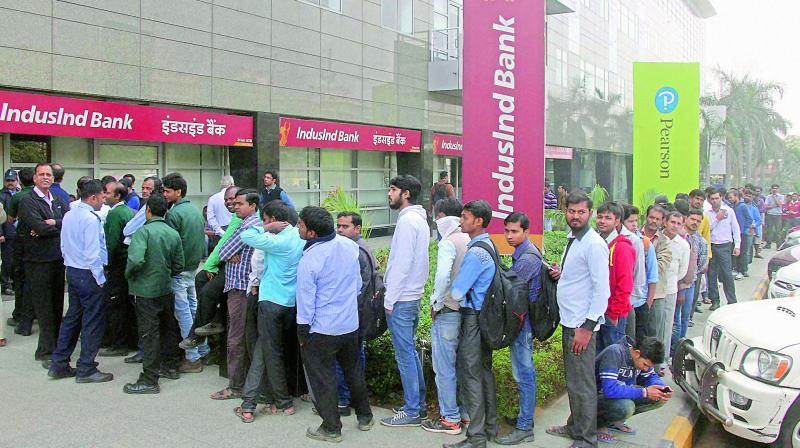Costly shot at stash: Has India succeeded in flushing out black money?
After 30 days of cash shortage, we try to look at how far India has succeeded in flushing out black money from the system.

With the hopes of getting a windfall from demonetisation exercise almost fading away, the government may heighten the surveillance of money transfers as it seeks to increase tax collection in a face-saving exercise.
On Wednesday, RBI deputy governor R. Gandhi said nearly Rs 11.5 lakh crore of scrapped notes have come into the banking system. The scrapped notes in circulation as of November 8 were worth about Rs 15.44 lakh crore, a Reuters report said quoting government data.
While a good Rs 3.94 lakh crore is yet come into the banking system and only 23 more days are left, questions will be raised over the implementation of this scheme and its costs, if all Rs 500 and Rs 1000 notes are deposited in banks.
Intangible cost of the demonetisation may not be beyond the computational ability of economists. But the tangible costs in the form of loss of business could be difficult to ignore.
The Centre for Monitoring the Indian Economy forecast that the demonetisation would cost Rs 1,28,000 crore for the economy due to the loss of business or sales, cost to households, the expenses for printing fresh currency notes, etc.
This is quite big a figure to be ignored and the government could come under tremendous pressure to show gains from the demonetisation — at least to offset the cost incurred — as the promise of long term benefit may not go down well with the voters.
The government had sold the demonetisation step as a short-term pain for longer term gains that could come from flushing out of black money. Prime Minister Narendra Modi had bet his entire political capital on demonetisation. Given the kind of tough task master he is, analysts feel Mr Modi would not allow the domonetisation exercise go waste without bringing any tangible benefits to the government or the economy.
“The government has already begun raids on different people on the basis of information that it has received from several sources. They expected huge chunk of money to go out of the system. But Indians developed ingenious ways to circumvent the domonetisation drive. Now the government has to show that it means business and get the hidden money back,” said economist Arun Kejriwal.
The modus operandi could be targeting bank officials and those who might have connived with black money hoarders to convert their old notes. Sources, however, suggest that those who rented out accounts were ready to wait for nearly one year before getting them transferred to its original owners. In this backdrop, the government needs to wage a protracted battle against stash hoarders.
But will the government keep its fight against black money confined to cash or will it go all guns against all avenues of black money despite the initial reversal? This is a trillion dollar question.
Jan Dhan flows decline
The government on Wednesday said that inflows into Jan Dhan accounts have come down significantly after it warned people not to allow their accounts to be misused for converting black money into white.
The deposits in Jan Dhan accounts post demonetisation saw a sudden surge but after the Centre's warning against misusing such accounts, there has been a continuous fall in deposits in last couple of weeks.
Total amounts deposited during November 8-15 were Rs 20,206 crore, while during November 16-22, people deposited Rs 11,347 crore in such accounts.
This further decelerated to Rs 4,867 crore during November 23-30. Total daily deposit in Jan Dhan accounts as Rs 410 crore on December 1 and Rs 389 crore on December 2.


